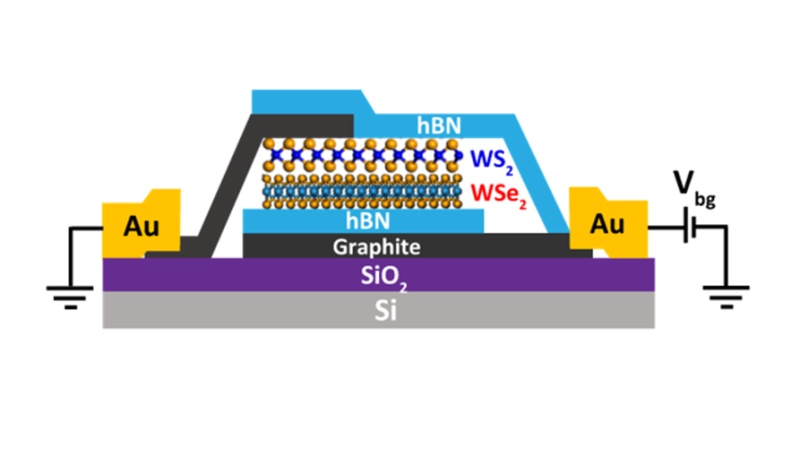February 16, 2021

In research recently published in Nature Physics, a team led by Sufei Shi, an assistant professor of chemical and biological engineering at Rensselaer Polytechnic Institute, demonstrated surprising and promising properties in heterobilayer transition metal dichalcogenide (TMD), created by stacking monolayer tungsten diselenide (WSe2) and tungsten disulfide (WS2) on top of one another, with precise control. TMD materials have been eyed for their atomically thin semiconductor properties.
When these two layers of TMD were stacked on top of one another and manipulated by Shi and his team, the researchers were able to observe a strong interaction between electrons in such a way that new material states were created. These new states come with high resistance, called correlated insulating states, which might help unravel high-temperature superconductivity.
Having a tunable platform that can also operate at low and high temperatures lays the groundwork for further exploration of this material, Shi said, and it expands possible uses for quantum computing or semiconducting applications in the future.
What researchers uncovered, both in the lab and through simulations, suggests promising electrical and optical properties for this material when optimally controlled. This paper mainly focused on electrical properties, but the Rensselaer research team now plans to explore optical properties.
“The fact that we can see it so robustly gives us a lot of confidence that the interaction is strong, and it’s possible to have other quantum states,” Shi said. “We are starting to see something exciting going on, a completely new territory. It’s just the beginning of the study.”
This work builds upon Shi’s previous research on TMDs and manipulating moiré superlattice formed by the heterobilayer TMDs in order to unlock its potential to enable faster, more efficient computing, as well as quantum information processing and storage.
Shi’s team at Rensselaer included graduate students Tianmeng Wang, Shengnan Miao, Zhen Lian, and postdoctoral researcher Zhipeng Li. This research was funded by the Air Force Office of Scientific Research, the National Science Foundation, the American Chemical Society’s Petroleum Research Fund, and the New York State Division of Science, Technology, and Innovation. The Rensselaer team was joined by researchers at UC Riverside, Carnegie Mellon University in Pennsylvania, the National Institute for Materials Science in Japan, and Oak Ridge National Laboratory in Tennessee. Huang Xiong, Tianmeng Wang, Shengnan Miao and Cong Wang contributed equally to the study.